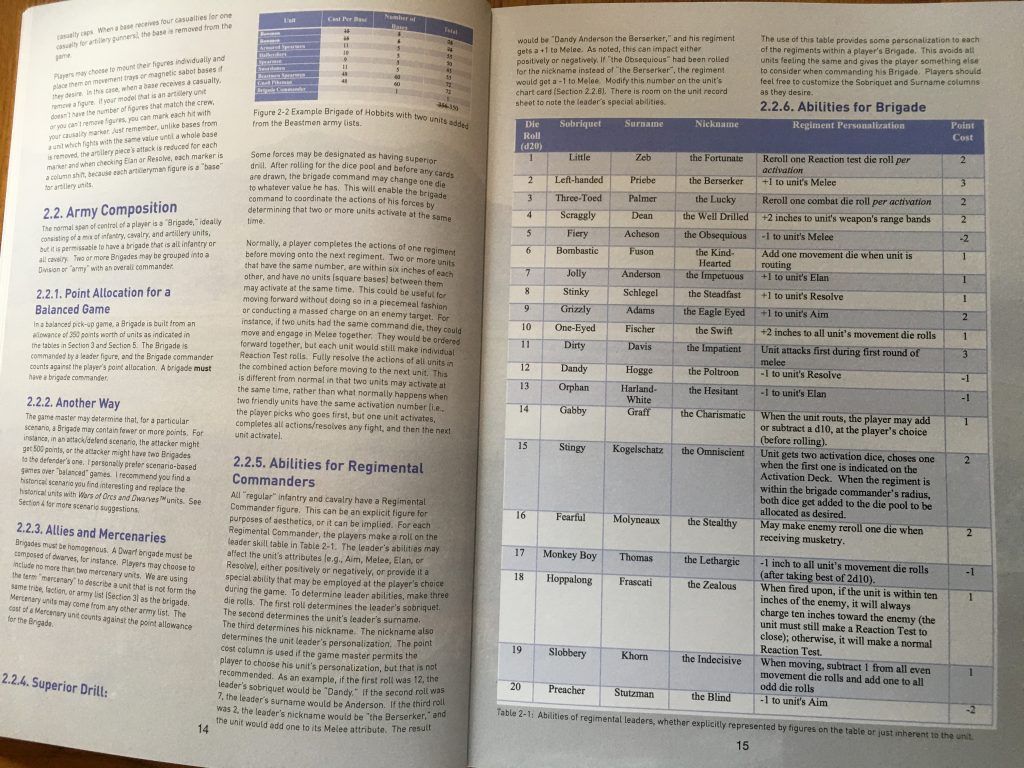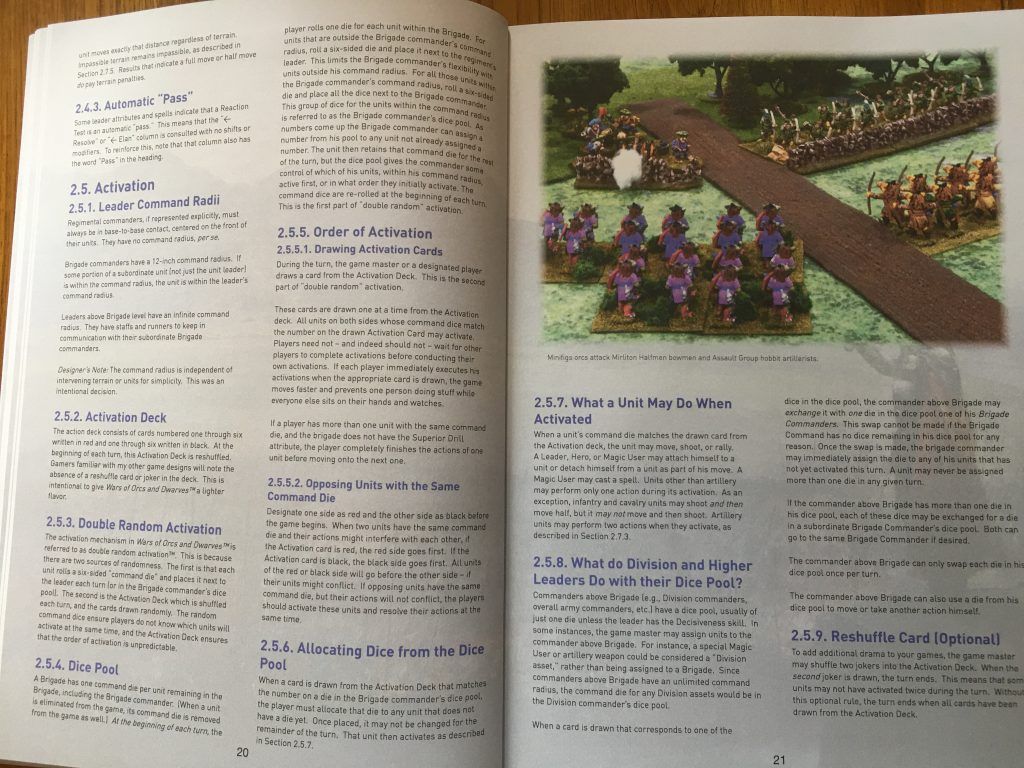This is the second article in my series looking at aspects of how Wars of Orcs and Dwarves: The Mass Fantasy Battle game works.
Today I’m looking at the role of leaders and other characters and how they interact with the command of the army.

Wars of Orcs and Dwarves is a mass fantasy battle game. It is designed for playing big battles rather than skirmishes. Each unit is represented by four to six base of each miniatures, an a unit can be thought of representing 500-1000 troops, consequently a base of miniatures represented around 100 troops. Each unit of infantry or cavalry has a leader. The leader can either be explicitly represented by a leader model, or can be thought to be one of the troops on a normal base. The unit leader affects the abilities of there unit (for good or ill) by there personalty. At the start of the game a D20 is rolled for each unit leader which defines there personality trait which could be ‘Lucky’ adding a reroll of one of the units combat dice each activation, or ‘Hesitant’ reducing the units Elan by one.

The role of higher level leaders, who command the brigades of the whole army is to influence how there command fights by issuing orders. This is represented in the game by the command pool and activation system. A brigade commander has a command radius representing there sphere of influence. Normally this is 12″, although it can be longer or shorter if the leader is characterized as having superb or poor staff. At the start of each turn the player checks which units are within the commanders command radius. Each unit in command, plus the leader gives a command dice. This is a D6 which is rolled and the number goes into the commanders command pool. Lets imagine our commander had five units in command. They roll six dice, one for each unit and one for themselves, rolling 2, 4, 4, 5, 5, 6. These dice go in the commanders pool. There is also a unit of cavalry which has gone off on a wide flanking move and is out side of the command radius. A dice is rolled for them separately, rolling a 5 and is allocated to the unit as it is to far away for the brigade commander to influence.

The game uses an activation deck. This contains red 1-6, black 1-6 and two jokers. The deck is shuffled and the first card is drawn. One player / side is Red and the other Black. Lets assume we are the Red Player
The first card is drawn, it is Red 4. All ‘4s’ in either players command pool or ‘4s’ allocated to units get to act in this phase. As the card is a Red 4, and we are the Red player our ‘4s’ get activated first. There are currently no ‘4s’ allocated to units so we take a ‘4’ from our commanders command pool and decide how we want to use it. Maybe we have a plan? Maybe we want to weaken the enemy with our artillery before advancing the infantry on our left flank. We therefore allocate the two ‘4s’ to our two artillery units. They may now activate. One is in position. It uses the activation to fire. The second is further back so uses the activation to move half and unlimber. The ‘4’ is placed next to the unit. If the black ‘4’ is drawn before the turn is ended by the two jokers being turned, the units will get to act a second time. It is now the Black players turn to use any ‘4s’ they may have. When they have completed this, the next card is drawn. It is a black ‘5’. It is now the Black players turn to activate units first. When they have finished, it is our turn. We do not have any ‘5s’ in our command pool to allocate, but the cavalry that is out of command on the flank has a ‘5’ next to it, so we can activate it.
This continues until all cards have been drawn or the turn has ended early because the two jokers have been drawn.
Higher level divisional and army commanders have there own command pools. When the card is drawn that matches there number they can swap there dice with a subordinate who can then allocate it to a unit in there brigade.
Wars of Orcs and Dwarves is currently live on Kickstarter. Click here to find out more.

0 Comments